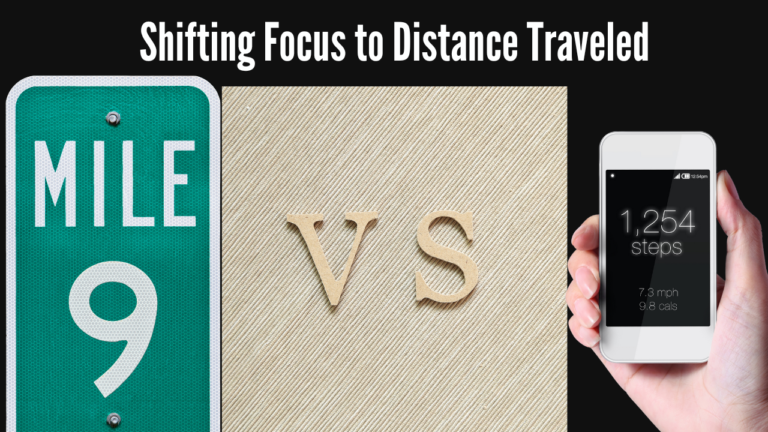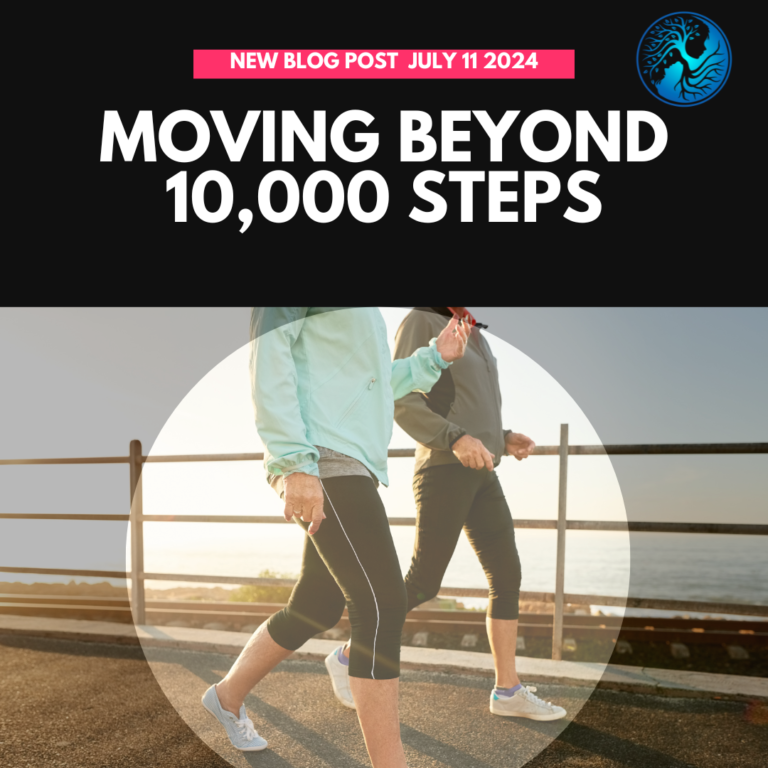The 10,000 steps mantra has become a cornerstone of modern fitness culture, promising improved health, weight loss, and longevity. However, what if I told you that this magic number didn’t come from scientific research but a clever marketing campaign in Japan during the 1960s? While aiming for 10,000 steps daily isn’t harmful, there’s a more effective way to enhance your well-being. By shifting our focus from arbitrary step counts to a holistic movement model inspired by our hunter-gatherer ancestors, we can unlock peak performance and live healthier, longer lives. Let’s explore how embracing this ancient approach can transform your fitness journey.
The 10,000 Steps Myth
Origins of the 10,000 Steps Goal
The 10,000 steps goal has become a popular fitness benchmark, but it didn’t originate from scientific research. Instead, it started as part of a 1960s marketing campaign in Japan. A pedometer called the “manpo-kei” (meaning “10,000 steps meter”) was introduced, and this catchy, easy-to-remember target caught on globally, becoming a standard fitness goal despite its arbitrary nature.
The 2019 JAMA Study on Step Counts
Recent research challenges the necessity of this specific target. A 2019 study published in JAMA Internal Medicine examined the relationship between step counts and mortality rates among older women. The study found that while increasing daily step counts did correlate with lower mortality rates, the benefits plateaued at about 7,500 steps per day. This means that for older women, achieving 7,500 steps a day provided significant health benefits, and pushing beyond this number didn’t yield additional advantages.
Quality and Consistency Over Numbers
This finding is crucial because it suggests that the famous 10,000-step target may not be necessary for everyone. Instead, focusing on consistent, moderate activity levels could be more beneficial and achievable, especially for older adults. Quality and consistency of movement might be more important than hitting a specific step count.
Consider this: If your body isn’t adequately prepared and balanced with adequate nutrition and sufficient sleep for recovery, pushing to meet a high step count can lead to fatigue and injury. You need proper support to take your steps to avoid harm rather than benefit. However, when your body is consistently moving out of habit, adequately fueled, and well-rested, it can handle more activity efficiently, promoting better long-term health.
Balanced Movement for Long-Term Health
This perspective aligns with the idea that it’s not just about reaching a specific number but about integrating movement into your daily life in a balanced and sustainable way. Doing so can improve your overall health and longevity, similar to our hunter-gatherer ancestors who moved regularly and purposefully throughout their day.
By focusing on consistent, varied, and purposeful movement rather than an arbitrary step count, you can better support your body’s needs and promote long-term well-being. Embracing this holistic approach to movement can help you achieve peak performance and a healthier, longer life.
The Hunter-Gatherer Perspective
How Our Ancestors Moved for Survival
Our ancestors were hunter-gatherers who moved not for exercise but for survival. They walked, ran, climbed, and carried heavy loads as part of their daily activities to find food, water, and shelter. This constant movement was crucial for their survival and significantly shaped our physiology over millions of years. Our bodies are designed for regular, varied movement rather than long periods of inactivity punctuated by short bursts of intense exercise.

Critical Aspects of the Hunter-Gatherer Movement
Varied and Functional Activities:
Hunter-gatherers engaged in a wide range of movements. They didn’t just walk or run; they also climbed trees, carried heavy objects, and performed other functional tasks necessary for survival. This variety ensured that different muscle groups were engaged, promoting overall physical fitness and adaptability.
Consistent Daily Movement:
Movement was a regular part of their daily routine, not something confined to a specific workout time. They moved consistently throughout the day, seamlessly integrating physical activity into their lifestyle. This constant motion kept their bodies in peak condition and avoided the health pitfalls of a sedentary lifestyle.
Purpose-Driven Tasks:
Every movement had a purpose. Whether it was hunting for food, gathering resources, or building shelters, their physical activities were driven by necessity. This purpose-driven movement ensured they remained active and engaged, both physically and mentally.
Ability to Cover Large Distances:
Hunter-gatherers often traveled long distances to find resources. This ability to cover large areas ensured they had access to diverse food sources and environments. Walking or running for miles was a natural part of their daily life, contributing to their robust physical health.
The Importance of Blood Flow
Benefits of Improved Blood Flow from Consistent Movement
Enhanced Cardiovascular Health:
Regular movement promotes good circulation, essential for maintaining a healthy heart. Improved blood flow reduces the risk of cardiovascular diseases by keeping the blood vessels flexible and reducing plaque buildup.
Better Cognitive Function:
Good circulation ensures the brain receives adequate oxygen and nutrients, which are vital for cognitive functions. Regular movement has been linked to improved memory, concentration, and overall brain health.
Improved Immune Response:
Consistent physical activity boosts the immune system by promoting the efficient circulation of immune cells. This enhanced immune response helps fight off infections and reduces the risk of chronic illnesses.
Faster Recovery from Exercise and Injury:
Efficient blood flow aids in the quicker removal of waste products from cells and tissues, speeding up recovery from exercise and injuries. This means regular movers heal faster and are less prone to prolonged discomfort.
Efficient Waste Removal from Cells:
Improved circulation helps effectively remove metabolic waste products from cells. This efficient waste removal is crucial for maintaining cellular health and preventing the buildup of toxins that can lead to various health issues.

Distance Over Steps: A New Metric
Shifting Focus to Distance Traveled
Instead of fixating on a step count, focus on the distance you travel daily. This approach builds a habit of comprehensive physical activity, promoting varied terrain and prolonged movement, which are more natural and effective for our bodies.
- Herman Pontzer’s Research on the Hadza Tribe
Dr. Herman Pontzer’s research on the Hadza tribe in Tanzania shows they walk 6-12 miles a day, involving varied movements like walking on uneven terrain, climbing, and carrying objects. This promotes overall health and fitness.
Benefits of Focusing on Distance
Engaging More Muscle Groups:
Walking longer distances on varied terrain engages different muscle groups, promoting a well-rounded workout.
Promoting Endurance:
Covering more considerable distances enhances cardiovascular endurance, improving stamina and heart health.
Encouraging Exploration and Cognitive Stimulation:
Focusing on distance promotes the exploration of new areas, adding variety and mental stimulation, boosting both physical and psychological well-being.
Emphasizing Daily Movement Beyond Structured Exercise
Simple actions like standing while talking on the phone, taking the stairs, and walking short distances can have significant health benefits. Increasing NEAT enhances overall activity levels and long-term health.
Practical Applications of Building a Movement Habit
Integrating More Movement into Modern Life
- Walking Meetings and Standing Desks:
Transform sedentary activities into opportunities for movement to increase daily activity, improve posture, and boost energy.
- Exploring New Areas by Walking or Biking:
Walk or bike to new places to boost physical activity and add adventure to your routine.
- Carrying Groceries or Other Loads:
Carry groceries or other items to engage multiple muscle groups and promote strength and endurance.
- Using Active Transportation Methods:
Opt for walking, biking, or public transportation to increase daily steps and support sustainability.
The Blue Zones
Blue Zones are regions where people live much longer than average. The term was first coined by Dan Buettner, who identified five specific areas:
- Okinawa, Japan
- Sardinia, Italy
- Nicoya, Costa Rica
- Ikaria, Greece
- Loma Linda, California, USA
Critical characteristics of Blue Zones include:
Regular, low-intensity physical activity integrated into daily life
Plant-based diets with minimally processed foods
Strong social connections and a sense of community
A sense of purpose in life
Stress reduction practices
Moderate alcohol consumption, often red wine
Emphasis on family
Engagement in spirituality or religion
Tech Company Walking Meetings
Examples from Facebook and Twitter:
Companies like Facebook and Twitter have adopted walking meetings, boosting daily movement, creativity, and problem-solving abilities.
Integrating these strategies into your routine allows you to move beyond the 10,000-step goal and embrace a holistic, practical approach to health and fitness. Healthy movement habits can help you achieve peak performance, improve well-being, and enjoy a healthier, longer life.
The Role of Consistency
Consistent daily movement is more effective than intense, sporadic workouts. A study in the American Journal of Epidemiology found that replacing 30 minutes of sedentary time with light activity reduces the risk of early death by 17%. This underscores the importance of integrating regular, moderate activity into your routine.
Overcoming Modern Challenges
Incorporate movement into your daily life despite modern sedentary challenges:
- Use Standing Desks and Take Regular Breaks: Stay active at work by standing more and taking short movement breaks.
- Explore Parks and Urban Areas: To add variety to your routine, seek out local parks or explore your city.
- Break Movement into Smaller Chunks: Fit short walks or stretches into your day to keep moving consistently.
Shifting focus from step counts to holistic, varied movement can transform your health. By building consistent, purpose-driven activity habits, you align with a more natural way of staying fit and healthy. Think about how you can incorporate more movement into your day to meet a number and truly enhance your well-being.
Share your tips and experiences for integrating more movement into your daily life. Let’s inspire each other to move more and live healthier, longer lives.
Don’t Stop Here
More To Explore
The Ultimate Guide to Calming Your Body and Nervous System for Better Sleep
A Guide to Calming Your Body for Better Sleep A Guide to Calming Your Body for Better Sleep In today’s fast-paced world, one of the
The Hidden Flaws in Your Transformation Journey—and How to Fix Them
Ever feel like you’re doing all the right things but still hitting a wall? What if the secret to unlocking limitless energy isn’t just in
10 Habits Business Owners Must Break for Long-Term Success
If you’ve ever felt stuck in your business, overwhelmed by the grind, or constantly on the verge of burnout, you’ve likely been chasing success the

